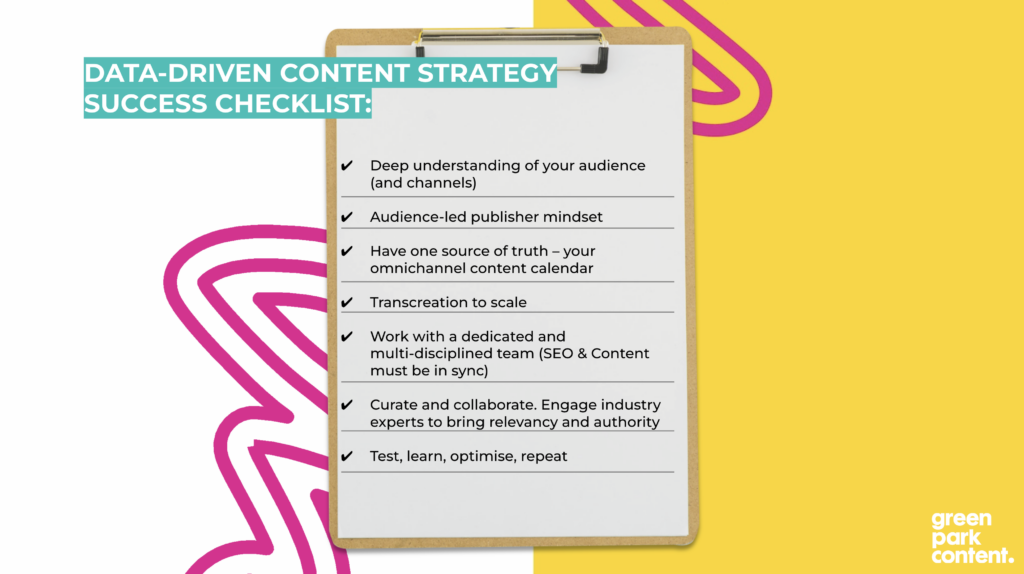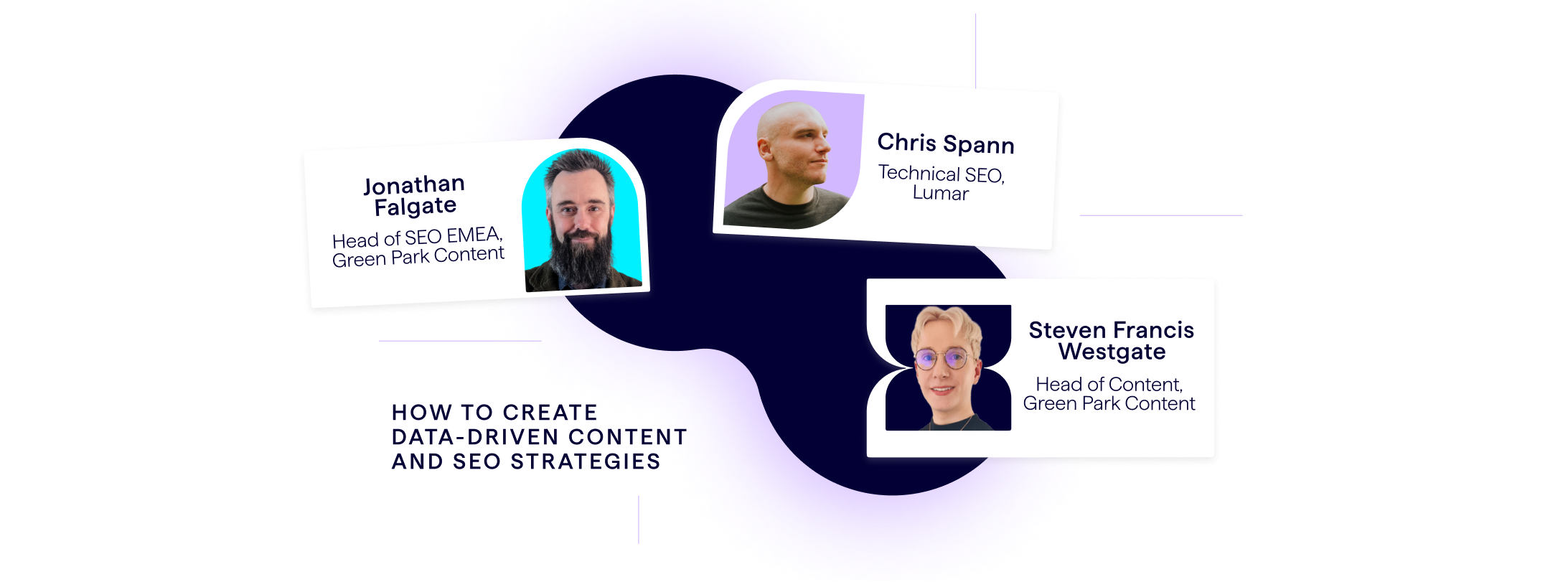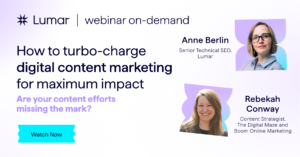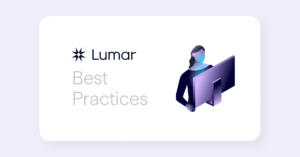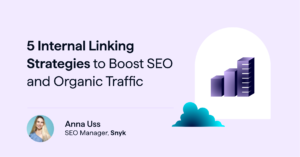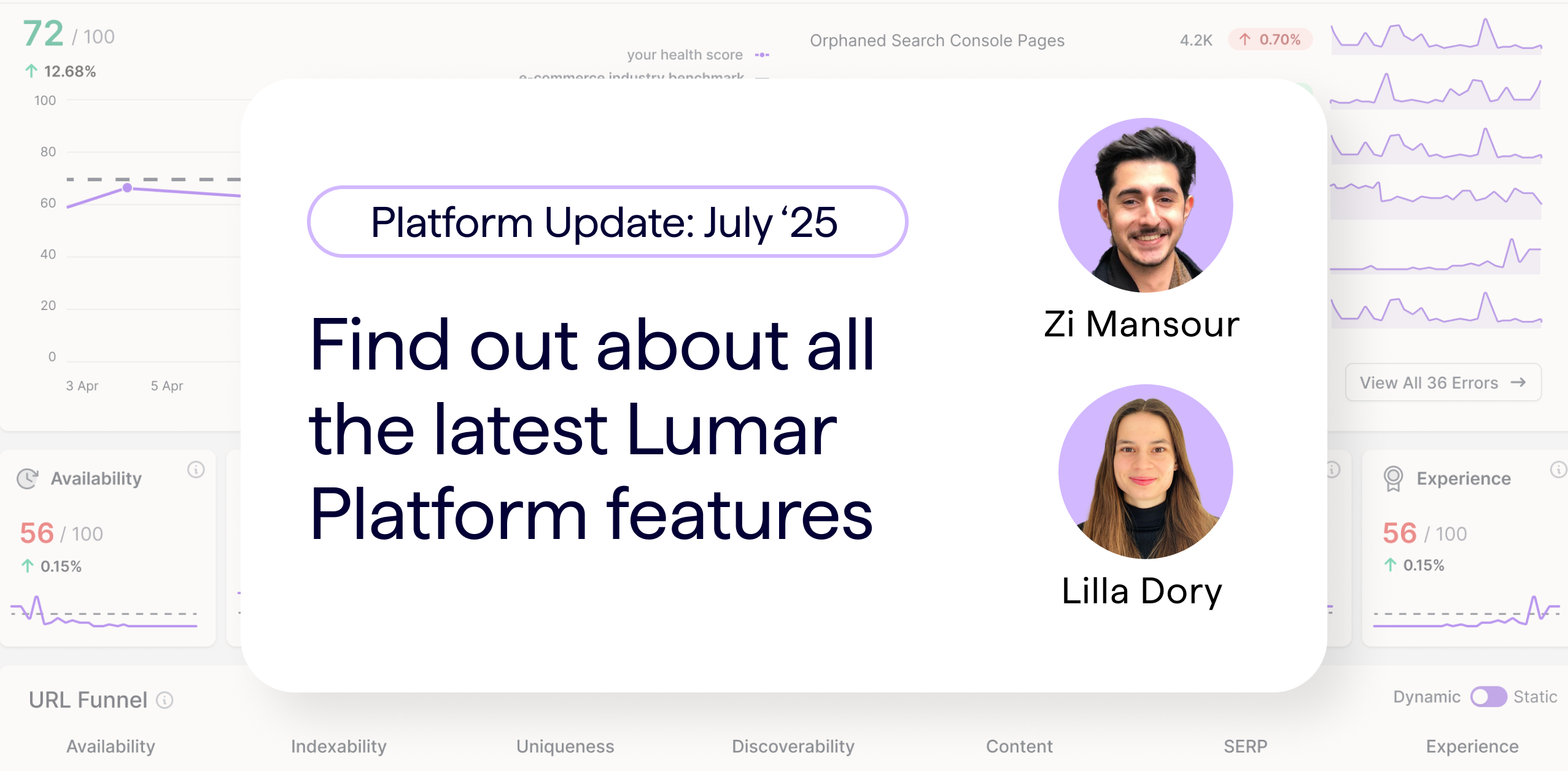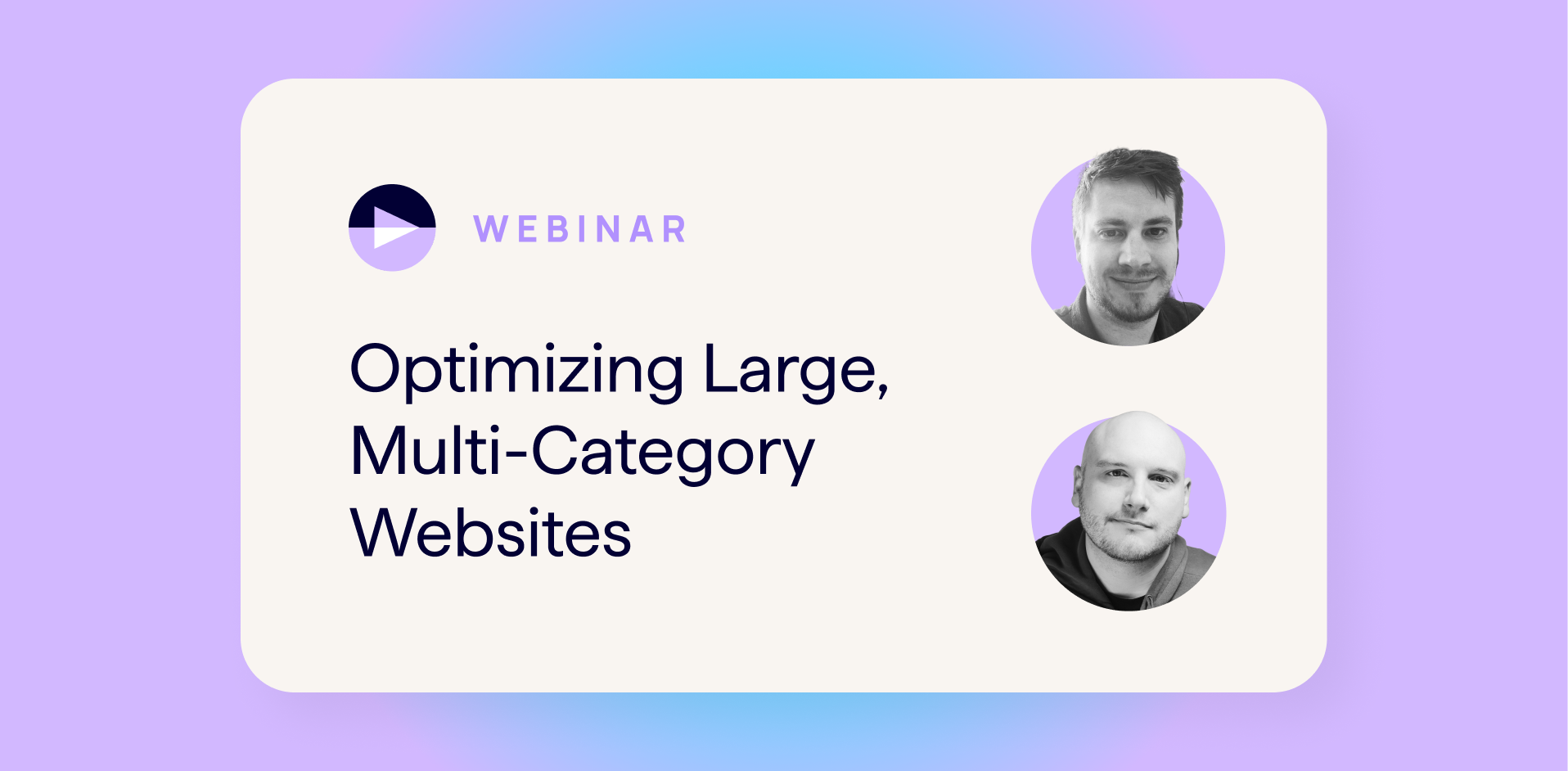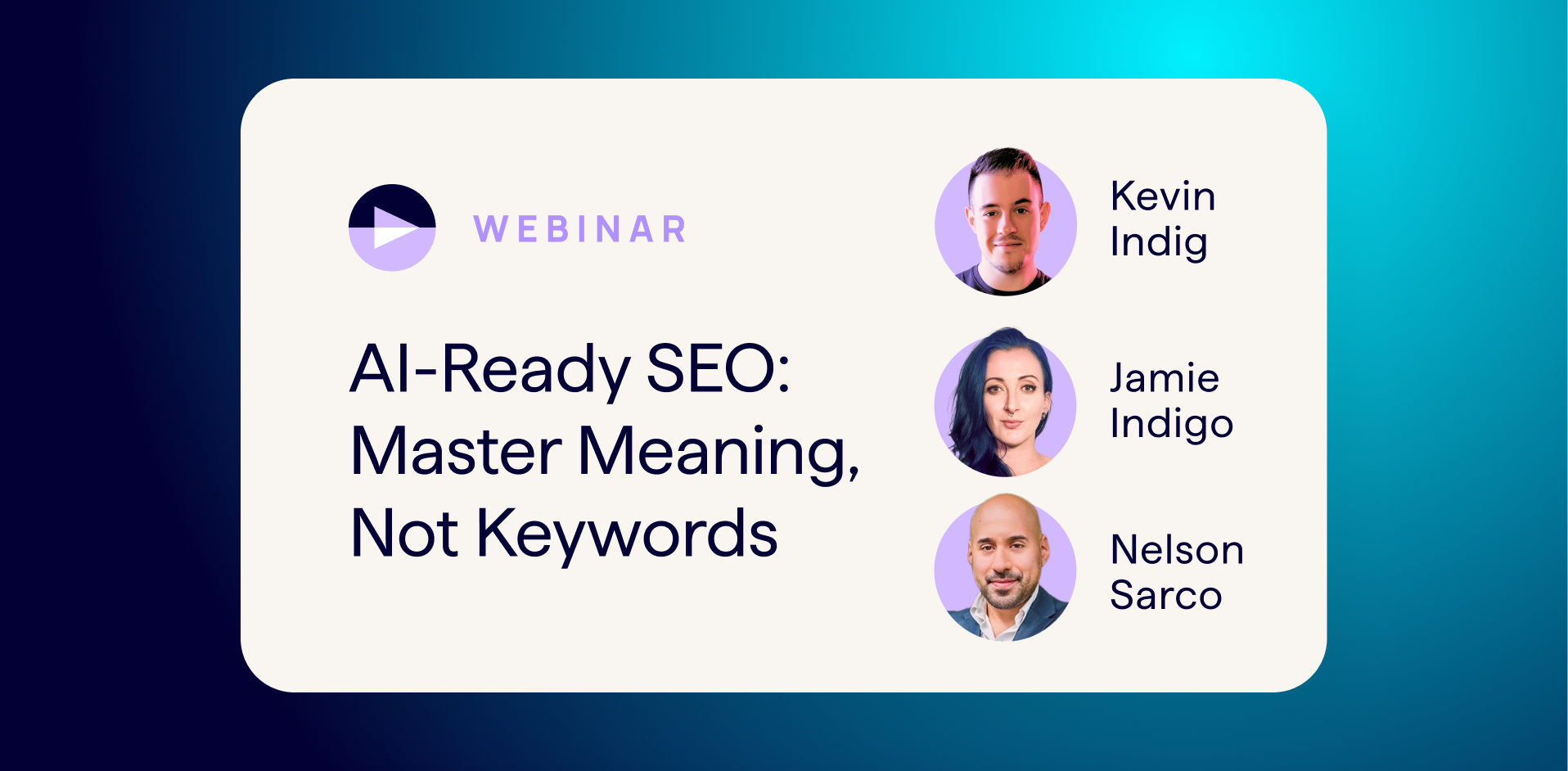The latest session in Lumar’s regular webinar series takes a look at data-driven content strategies and how this approach fits into broader SEO plans.
We welcomed Jon Falgate and Steven Francis Westgate from Green Park Content in conversation with our in-house tech SEO specialist (and member of Lumar’s professional services team), Chris Spann. Falgate is Head of SEO at Green Park, while Westgate heads up the content team. Together, they provided a comprehensive view of how valuable well-placed digital content can be for both consumers and businesses.
Read on for our key takeaways, or watch the full webinar (including Q&A session) in the video above.
Data collection and analysis best practices for content & SEO strategies
Data is integral to any SEO content strategy today. But as Falgate highlighted in this webinar session, it has to be good data. Which is to say, it also needs to be clean data.
“We want to clean our data to make sure it’s super-relevant for us,” he says.
This involves building good exclusion lists to make sure the irrelevant information is removed and the resultant analysis is as concise and targeted as possible. Clustering data together is important too – and should be done early in the process.
“We really want to target unique search intent,” Falgate says. “That’s very often spread over a cluster of keywords, articulated slightly differently or in different ways, but equates to the same unique search intent – which itself equates to the validation for a unique piece of content or a strategy to target that search intent.”
For Falgate, this clustering of clean data is a good way to signpost where the real opportunities are when it comes to strategizing content.
“Having a bit more critical understanding of the intention behind what people are looking for is vastly important for when that data gets handed off to a content creator or a content strategist,” Green Park’s Head of Content, Steven Francis Westgate adds. “Because part of what you are looking to achieve is to have alignment to overarching goals.”
“Whether you are creating this [content] for a brand, or you’re a publisher site,” he continues, “what you are trying to achieve is to understand the purpose as to why to create a certain piece of content, where that content then has to live, how do you optimize it, how are you interacting, and what is the ultimate next step you can give to an audience as well.”
For Green Park Content, this is when social listening plays a part. Content needs to occupy the sweet spot where search intent and social conversations overlap.
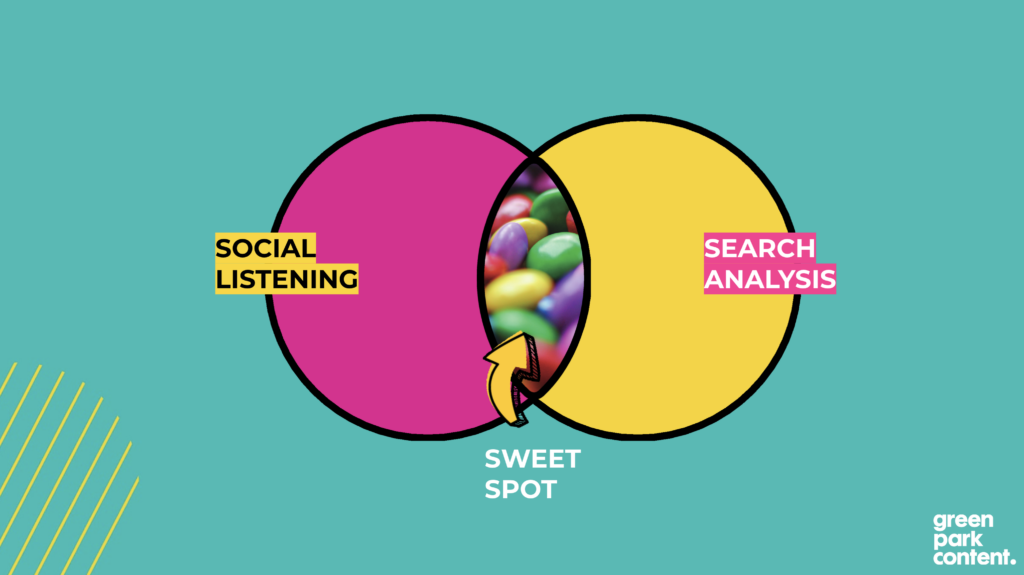
“You want to always be meeting your consumer where they are looking for content,” Westgate adds. “If you’ve got search intent, there might be opportunities that actually marry up in terms of other social platforms — themes you can pull from social listening that align — to start thinking about more streamlined ways to pillar your content so that you will be more efficient.”
Use audience insights and data to build long-term value into your content
When thinking about digital audiences, brands need to be asking what delights the consumer. What’s their motivation?
Giving users quick answers and resolving their problems efficiently is important, but content can also be an important way to build audience relationships.
“As content marketers, the ultimate goal is retention and long-term consumer value,” Westgate says, “that they return to you whether that is for a source of information or to make a commercial decision as well.”
Having comprehensive insights into how your audience consumes content, what they want to buy, and where they are online, is crucial if you want to build long-term value into the content you produce.
What to monitor to build an always-on, omnichannel content strategy
The team at Green Park is consistently trying to maximize the effectiveness and efficiency of the content they produce. This means developing content strategies that are always on and omnichannel.
“You’ve got to be consistently present across all of them; all of your own channels, online, offline,” Westgate says.
But businesses do sometimes underestimate how much of an investment is involved with this always on, omnichannel approach.
“You can find those efficiencies if you understand your data, you understand your audience, and you understand the purpose and the role that each of your channels can play,” he adds.
“We monitor a lot of Google trends, reactive social trends, and social data for searching key themes across our projects,” Westgate says. “If we’re able to pinpoint an early uptick in terms of – let’s say it’s a search term around how to do a high ponytail – and then start to layer in that social listening element…if you can be that early adopter of new search data then you put yourself into that front-running position.”
A successful content strategy needs to be centralized and insight-led.
“The key to success comes a lot from really focusing in on your content planning and your understanding of what the data is and how you are using it,” Westgate says. “And making sure that it’s aligned to your over-arching goals and objectives.”
This involves constant testing, learning, and refining so that you know your audience inside and out.
Dos and don’ts when building your content strategy
Falgate and Westgate offer the following things to look out for when honing your content strategy:
- Don’t overvalue data – remember, it’s a part of a bigger picture.
- Do compare your content regularly to what the competition is doing.
- Don’t get caught up in production.
- Do set realistic goals.
- Don’t create content without clear intention. Ask yourself: Why would anyone care? Why should it rank first in the SERPs?
Checklist: 7 tips for data-driven content strategy success
- Have a deep understanding of your audience (and channels).
- Have an audience-led publisher mindset.
- Have one source of truth – your omnichannel content calendar.
- Transcreation to scale.
- Work with a dedicated and multi-disciplined team. (SEO and content must be in sync!)
- Curate and collaborate. Engage industry experts to bring relevancy and authority.
- Test, learn, optimize, repeat.
